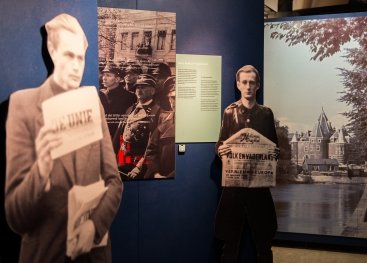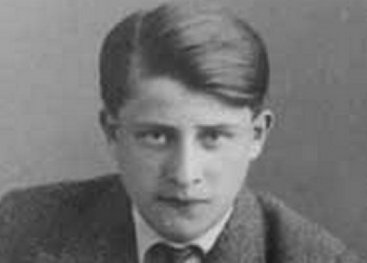
Adapt?
Adapting seemed easy
Life soon returned to normal. Businesses, schools, clubs, places of entertainment and public transportation functioned as before. Adapting to the new situation seemed easy. One new element were the blackout regulations. Everyone was required to cover up their windows to make it difficult for Allied pilots to locate their position at night.
Air-Raid Defence
Arm-plates from the Luchtbeschermingsdienst [LBD, Air-Raid Defence]. The LBD supervised compliance with blackout regulations. Every village and every neighbourhood had citizens working as volunteers for the LBD. They patrolled the streets at night and warned where streaks of light were noticeable.
The members were allowed to be on the streets after curfew. Many resistance workers used real or fictional jobs with the LBD as cover.

Fraternisation and Winter Help
The occupiers tried to encourage fraternisation between the German and the Dutch people. One example was the establishment of Winter Help, a charitable organisation that collected money for needy Dutch people. But the collections brought in very little. Rejecting Winter Help allowed the Dutch to express their anti-German sentiments.
Rejecting Winter Help as form of Resistance
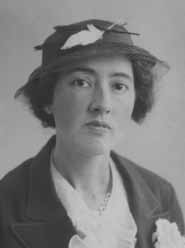 In April 1941, Jacoba Maria Blom-Schuh of The Hague told a Winter Help collector: 'I won't contribute to Winter Help until our queen comes back. The proceeds from Winter Help are for the Germans and the NSB members, and they're a gang of thieves, just like Adolf Hitler.'
In April 1941, Jacoba Maria Blom-Schuh of The Hague told a Winter Help collector: 'I won't contribute to Winter Help until our queen comes back. The proceeds from Winter Help are for the Germans and the NSB members, and they're a gang of thieves, just like Adolf Hitler.'
The collector filed a report and Maria Schuh was put in prison for three months. The experience did not soften her stance. The SS guards gave her their socks to darn and she sewed them shut, supposedly out of ignorance. Later she incorporated her prison experiences in embroidery work.
Orange
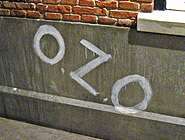 Most Dutch people kept hoping for a German defeat and the return of the Royal Family. They came up with a code expression: if someone said O zo! it meant Oranje zal overwinnen! ('Orange will triumph!').
Most Dutch people kept hoping for a German defeat and the return of the Royal Family. They came up with a code expression: if someone said O zo! it meant Oranje zal overwinnen! ('Orange will triumph!').

Birthday protest
June 29th 1940 was Prince Bernhard's birthday. The flag was flown everywhere. Many people wore a carnation in their lapel, just like Prince Bernhard.
This gesture turned into a mass protest demonstration. In reaction to this 'Carnation Day', the Germans had all royal portraits removed from public buildings. Later on street names were changed.
Royal symbols of resistance
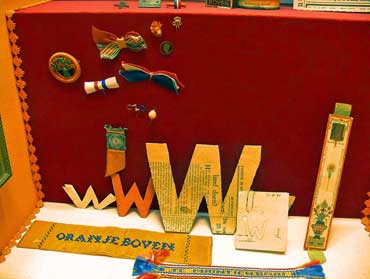
Royal symbols of resistance.
The 'W' stands for Wilhelmina,
the Dutch Queen.
This turned the Royal Family into an even stronger symbol of resistance. Many Dutch people wore pins and bows to show their loyalty to the queen and thus their hatred of the occupying forces. It helped to keep spirits up.
'Orange' name
The Hague, early 1941. Father and mother Niehot wanted to name their newborn baby Nelia after the midwife, Nelia Epker. But she suggested they give their child an 'Orange' name. The result was announced in the newspaper in a birth advertisement: Irene Beatrix Juliana Wilhelmina Niehot.
The family was applauded from all sides. Perfect strangers sent cards, flowers, cakes and even money. When Nelia Epker placed a thank-you advertisement in March 1941, so that all the names appeared in the newspaper once again, she was arrested. She would not return to the Netherlands until August 1945, as a survivor of the german concentration camp Ravensbrück.

